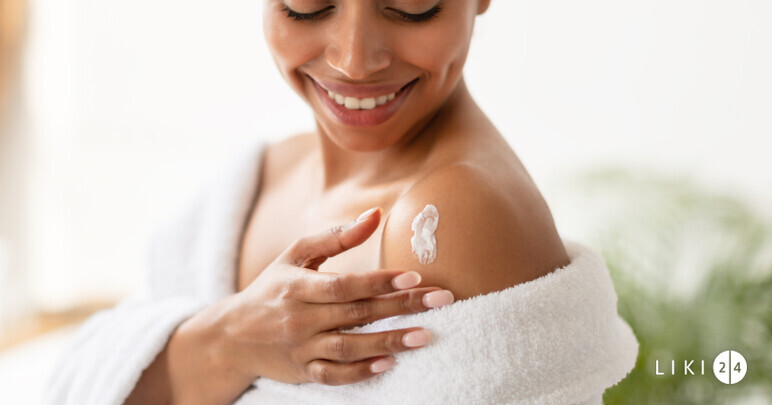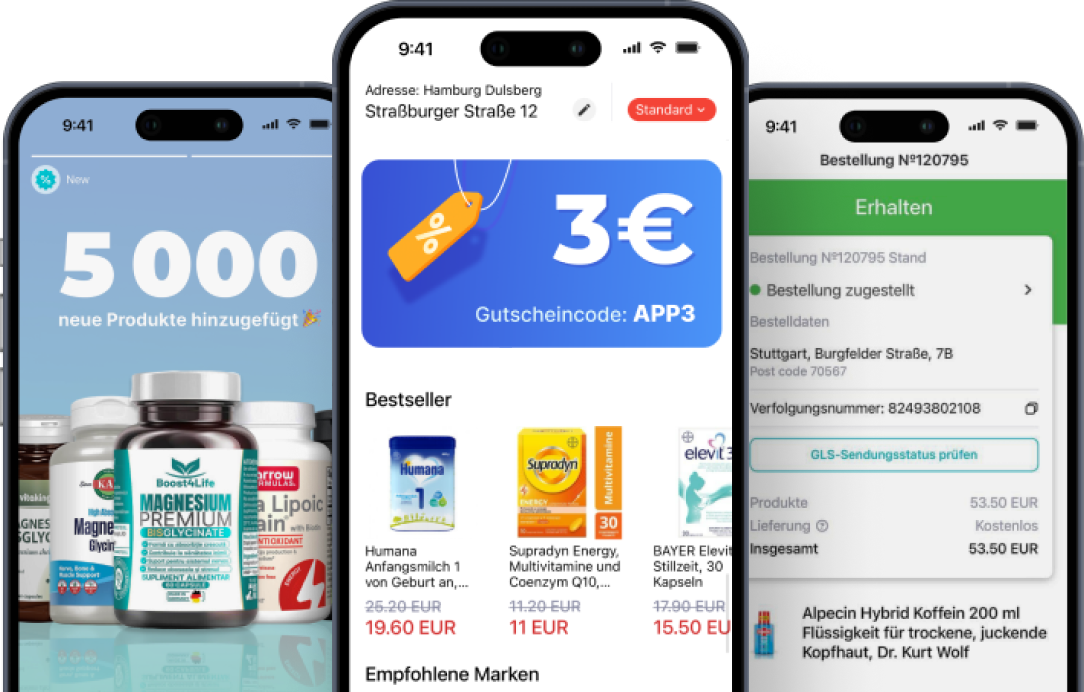È importante capire che la risposta breve alla domanda "cos'è l'acne": È una disfunzione della pelle. L'orifizio del follicolo pilifero, in cui si trova la ghiandola sebacea, è bloccato dal sebo e dalle cellule morte. Tali condizioni sono terreno fertile per la proliferazione dei batteri, la cui penetrazione provoca infiammazione, cioè un brufolo.
Nell'acne si distinguono sei tipi di manifestazioni patologiche della pelle:
- comedoni aperti e chiusi – punti neri e bianchi;
- pustole – i "classici" brufoli;
- papule – noduli rossi dolorosi senza punto bianco di pus;
- noduli – nodi duri dolorosi che causano visivamente "irregolarità" della pelle;
- cisti – grandi gonfiori sottocutanei con contenuto purulento. Le cisti lasciano cicatrici sulla pelle e sono considerate la forma più grave di acne.
L'"invincibilità" dell'acne è solitamente legata ai cambiamenti del livello ormonale. I cambiamenti più forti di questo tipo si verificano durante l'adolescenza, ma in alcuni casi possono persistere anche dopo il raggiungimento della maturità sessuale.
Circa il 50% delle persone che soffrono di acne in adolescenza non riesce a liberarsene a 30+ anni, e metà di questi neanche a 40+ anni.
Ovviamente, la correzione del livello ormonale tramite farmaci è compito di un endocrinologo o dermatologo. Tuttavia, esamineremo una delle misure supplementari efficaci:
Alimentazione corretta in caso di acne
È stato osservato che gli adolescenti nelle comunità occidentali soffrono di acne nel 79-95% dei casi, mentre gli adulti (18-25+ anni) sono colpiti nel 40-54% dei casi. Nelle comunità che seguono modelli tradizionali di alimentazione sana, questo problema praticamente non appare.
Ovviamente, anche la struttura della pelle, ad esempio, in base alla razza, gioca un ruolo, ma non possiamo ignorare l'alimentazione. Nel cosiddetto "Occidente", l'alimentazione contiene carboidrati raffinati, grassi "cattivi" (grassi trans) e prodotti lattiero-caseari in quantità molto maggiori rispetto a quelle sicure per la pelle.
Il principale "colpevole" in questa situazione è lo zucchero, il più dannoso tra i carboidrati raffinati, non solo per la salute della pelle.
Perché lo zucchero è dannoso per l'acne
Lo zucchero ha una certa relazione con l'ormone testosterone, il cui metabolismo è anche legato all'acne: il glucosio aumenta la sintesi di insulina, che stimola la sintesi di testosterone – e questo, a sua volta, intensifica l'acne. Ad esempio, l'acne appare molto frequentemente nelle donne adulte con alti livelli di testosterone.
Ma lo zucchero ha una relazione ancora più stretta con il fattore di crescita insulinico di tipo 1 (IGF-1) – un ormone il cui livello è molto più strettamente correlato alla gravità dell'acne rispetto al livello di testosterone. Il livello di IGF-1 e la sua attività sono tanto più pericolosi quanto più la dieta contiene zucchero raffinato.
Pertanto, la condizione della pelle in caso di acne (la gravità dell'acne) è direttamente legata al carico glicemico: Meno carboidrati raffinati, meno brufoli.
È importante capire che lo zucchero non significa solo dolci, ma anche tutti i carboidrati in generale, specialmente quelli semplici (i cosiddetti "rapidi"). Il corpo li trasforma molto attivamente in glucosio – cioè nello stesso zucchero. Pertanto, l'obiettivo principale in caso di acne è ridurre la quantità non solo di alimenti dolci, ma anche di alimenti con un alto indice glicemico in generale, inclusi pane bianco, patatine fritte, ecc.
Non bevete latte, ragazzi
Meglio dire – non ragazzi, ma adolescenti e adulti che si confrontano con l'acne. E non solo latte in sé, ma anche altri prodotti a base di latte vaccino, ad eccezione di quelli fermentati – ad esempio kefir, sebbene anche questo a volte possa causare problemi. E questo non è dovuto all'intolleranza al lattosio in sé (a proposito, il lattosio è lo zucchero del latte, e la vera intolleranza al lattosio è piuttosto rara, come l'intolleranza al glutine).
Tali prodotti possono contenere grassi dannosi, ma il principale pericolo del latte vaccino in caso di acne sono gli ormoni contenuti in esso, così come la proteina del siero di latte e la caseina, che con grande probabilità aumentano la produzione di IGF-1 nell'organismo, di cui abbiamo già parlato.
Inoltre, il latte contiene IGF-1 in sé. In generale, l'IGF-1 accelera la crescita di tutti i tessuti, compresa la pelle – ecco perché il latte è, ad esempio, benefico per i bambini piccoli (cioè per l'organismo in crescita), se il bambino non ha intolleranza al lattosio. Ma per adolescenti e adulti con acne, la situazione è diversa. In breve – il numero di cellule della pelle aumenta sotto l'influenza dell'IGF-1, ma queste non riescono a staccarsi in tempo. Questo porta a un'iperplasia dello strato corneo della pelle, un'ipercheratosi, che aggrava l'acne.
Inoltre, le proteine del latte contribuiscono ad aumentare il livello di insulina – anche se in misura minore rispetto ai carboidrati, ma comunque ciò può aggravare la gravità dell'acne.
Consiglio utile: Provate a rinunciare al consumo di latte (idealmente anche alla ricotta). Osservate lo stato della pelle per almeno 2-3 settimane, ma meglio per uno-due mesi. Una dieta senza latte probabilmente non risolverà completamente il problema dell'acne, ma può ridurre significativamente i sintomi dell'acne.
Dieta per l'acne
Una dieta particolarmente rigida e sadica per l'acne non è necessaria (così come varie "pulizie del fegato e/o del sangue" – tutte queste sono infondate e di solito inefficaci). Ma è necessario rinunciare a certi alimenti e sostituirli con alternative più sicure.
Ecco un elenco di alimenti che non dovrebbero essere consumati in caso di acne e le loro alternative:
- Zucchero – può essere sostituito con stevia o altri dolcificanti. È consigliabile consultare un medico per scegliere il dolcificante giusto. Ad esempio, il mannitolo, un alcol zuccherino, non ha molti degli "effetti collaterali" dello zucchero, non causa carie e non aggiunge calorie "inutili" – ma nonostante ciò, ha un indice glicemico piuttosto alto e, pertanto, non è raccomandato in caso di diabete o predisposizione a esso (prediabete). Inoltre il cervello segnala al corpo di attivare la produzione di insulina anche in caso di segnale dolce, che non proviene dallo zucchero, ma dal suo sostituto (il che, a sua volta, aumenta la produzione di testosterone e può aggravare l'acne);
- Alimenti con alto indice glicemico, carboidrati "rapidi", lo zucchero già menzionato, tutte le bevande gassate zuccherate del supermercato, alimenti amidacei processati (ad esempio, patatine fritte, chips), dolci, torte, succhi confezionati del supermercato (fino a 7 cucchiaini di zucchero per 100 ml! Tra l'altro, anche i succhi appena spremuti a casa contengono molto zucchero) – e prodotti simili. Le alternative a tutto questo dovrebbero essere carboidrati "lenti", prodotti integrali (senza zucchero o con dolcificanti – solo non con fruttosio), bevande non zuccherate e simili;
- Latte vaccino può essere sostituito, se necessario, con latte di mandorle, riso, soia o cocco. Sulla base di questi prodotti "alternativi" vengono prodotti anche altri prodotti lattiero-caseari – yogurt, panna, latte condensato zuccherato (se necessario, tutto questo può essere preparato anche a casa);
- Caffè – dovrebbe essere evitato. I chicchi di caffè contengono un acido organico che aumenta il livello dell'ormone "dello stress" cortisolo, che stimola anche l'attività delle ghiandole sebacee, il che è molto dannoso in caso di acne. Cioè, dovrebbe essere evitato anche il caffè decaffeinato, perché in questo caso non è la caffeina a essere pericolosa, ma il caffè stesso. Le alternative possono essere varie bevande "simili al caffè" a base di cicoria, noccioli di datteri, ecc. Tra l'altro, i dermatologi raccomandano anche di non bere tè nero forte in caso di acne – è meglio sostituirlo con tè verde o di gelsomino leggermente infuso, e ancora meglio con vari tè alle erbe, incluso il tè di salice ("Ivan-Chai"), che, in forma fermentata, non si distingue per gusto dal tè nero, ma apporta maggiori benefici all'organismo e ha un effetto diuretico meno pronunciato. Anche le infusioni di camomilla, achillea, calendula, ortica, foglie di fragola e menta sono utili in caso di acne – o una miscela di tutte queste;
- Cioccolato – se rinunciare a esso è impossibile, consumate solo cioccolato fondente (dal 75%) e poco (1-2 pezzi al giorno). Tra l'altro, potete considerare il cioccolato senza zucchero aggiunto, come quello della compagnia Torras (Spagna) – tra questi ci sono anche varietà con alto contenuto di cacao, dal 85-95%;
- Carne grassa / pesce grasso – vengono sostituiti con varietà magre, che non devono essere fritte/affumicate, ma bollite o cotte al forno;
- Qualsiasi tipo di fast-food, piatti pronti acquistati, ketchup, salse – tutto questo non è raccomandato nemmeno in caso di pelle sana, e tanto meno in caso di acne;
- Spezie / spezie piccanti – non sono completamente vietate, ma non sono desiderabili. Inoltre, la quantità di sale dovrebbe essere ridotta al minimo;
- Bevande alcoliche. Come possono essere sostituite, ognuno decide per sé, ma sarebbe meglio se la sostituzione fosse con un'attività fisica di qualche tipo.
Ciao, caro diario...
Tenere un "diario alimentare" aiuta significativamente nella lotta contro l'acne. In questo dovreste annotare quotidianamente assolutamente tutti gli alimenti e le bevande consumati – così sarà molto più facile identificare cosa intensifica le eruzioni cutanee e rinunciare a questi alimenti.
Ad esempio, con l'aiuto di un tale diario sarà molto più facile identificare i prodotti lattiero-caseari che provocano una reazione indesiderata della pelle. Forse il vostro organismo tollera solo il latte, forse anche altri prodotti lattiero-caseari, fino al formaggio e yogurt. Oppure forse i prodotti lattiero-caseari non influenzano affatto l'acne nel vostro caso. Un diario alimentare vi aiuterà a monitorare tutto questo con una cronologia chiara e connessioni causali.
Alimenti e vitamine/minerali utili in caso di acne
L'alimentazione in caso di acne deve necessariamente essere arricchita con:
- Fibre – fibre vegetali con molte proprietà benefiche. Se non potete o non volete consumare molte verdure crude, potete acquistare fibre in farmacia o negozio e consumarle secondo le istruzioni. È importante bere molta acqua, altrimenti può verificarsi stitichezza, il che è estremamente indesiderabile in caso di acne;
- Prodotti integrali (in particolare grano saraceno), crusca (questa può essere aggiunta a kefir, insalate e altri piatti);
- Verdure, che contengono antiossidanti e flavonoidi benefici;
- Frutti di mare, fegato di manzo, carne di pollo, semi, legumi – tutte queste sono fonti di zinco. Fonti di zinco sono anche vari noci, ma nel caso delle noci può verificarsi anche una reazione negativa della pelle in caso di acne, quindi dovreste orientarvi in base alla tolleranza individuale;
- Oli vegetali spremuti a freddo, chia, quinoa. La quinoa è chiamata "oro dei cereali" nel trattamento dell'acne. In questo caso, tutte le parti di questa pianta sono utili – non solo i chicchi, ma anche i germogli e le foglie giovani. Contengono lisina, una proteina vegetale unica che contribuisce alla rapida guarigione e rigenerazione della pelle.
Dopo aver consultato un medico, potete prendere anche alcune vitamine e minerali, come:
- Vitamina A (Retinolo). Il trattamento con retinolo e retinoidi occupa un posto d'onore nella lotta contro l'acne;
- Vitamina C;
- Vitamina E;
- Vitamine B – in particolare B6 (piridossina) e B3 (niacinamide). Importante! Fate attenzione con la vitamina B12 (cianocobalamina) – secondo alcuni studi può provocare e aggravare lo sviluppo dell'acne;
- Vitamina D;
- Zinco;
- Selenio.
Se necessario, il medico prescriverà anche altri integratori alimentari e/o farmaci. L'autotrattamento in caso di acne non è categoricamente raccomandato.
Vi auguriamo buona salute e una pelle chiara e luminosa! :)


 Benessere
Benessere  Fitness
Fitness  Nutrizione
Nutrizione  Bellezza
Bellezza  Bellezza
Bellezza  903 visualizzazioni
903 visualizzazioni 

 Articolo Precedente
Articolo Precedente 







